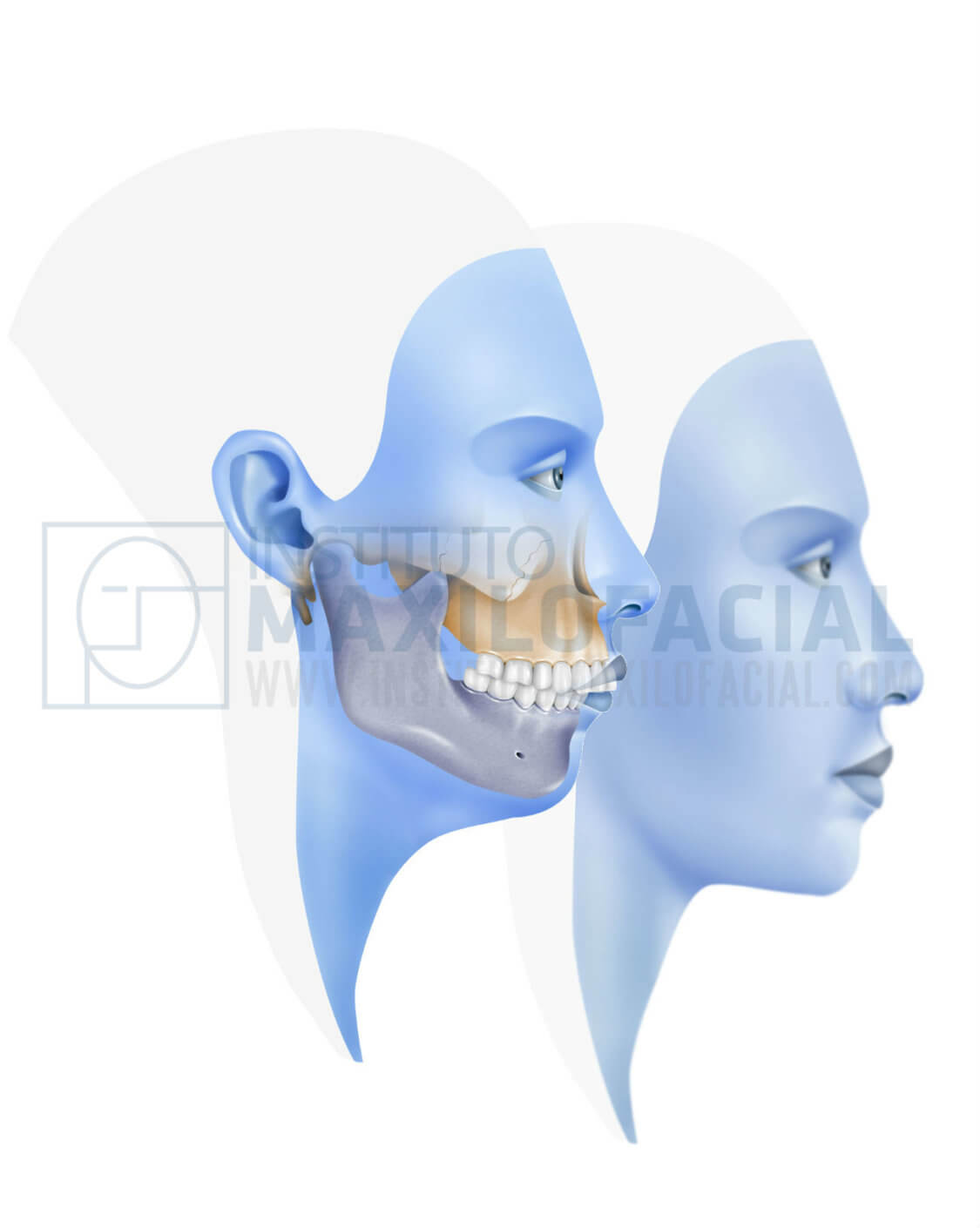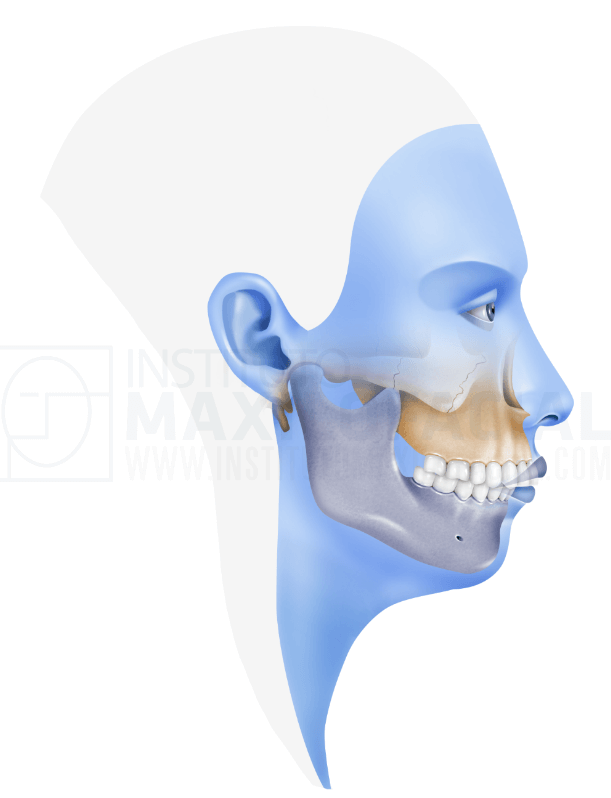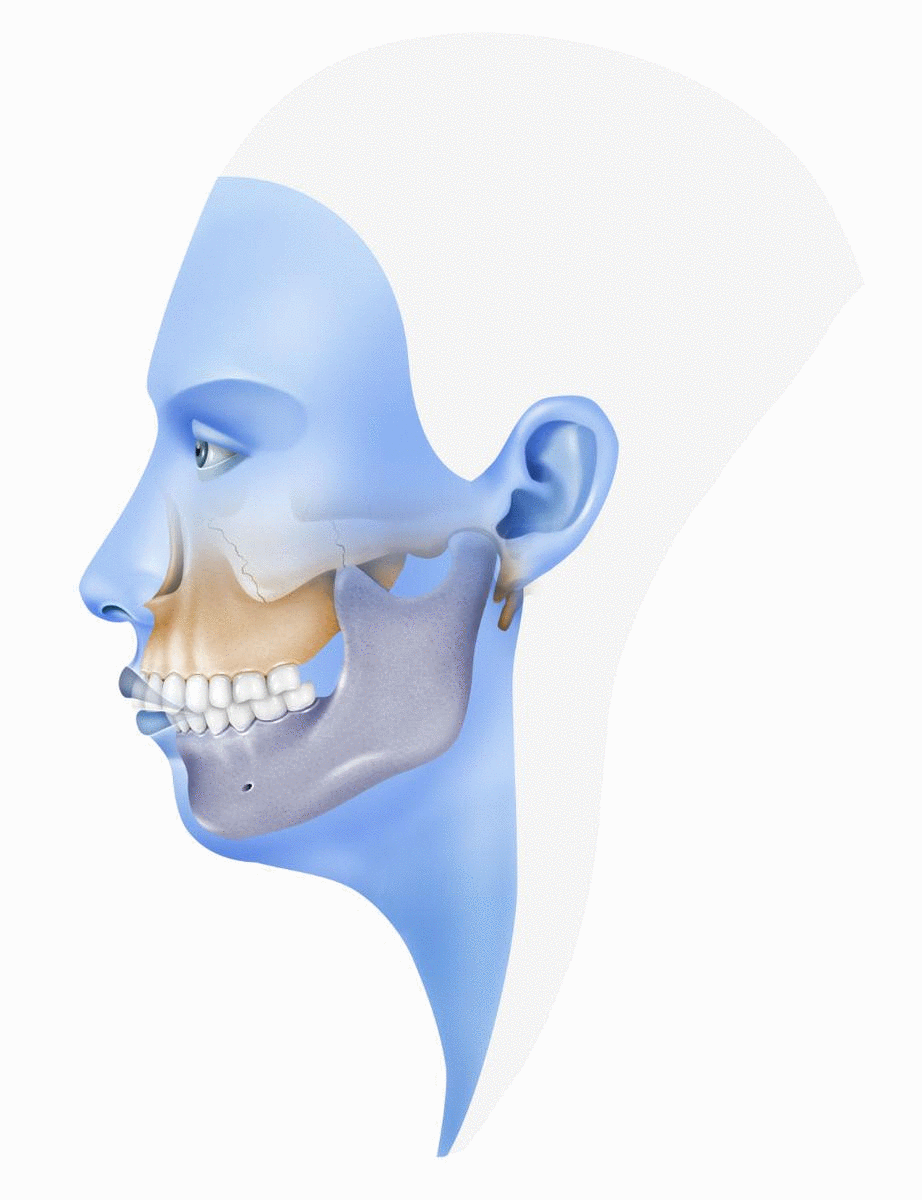Retrognathia, from the Latin retro, "backward" and from the Greek, gnathos, jaw, is a dentofacial deformity in which both jaws are misaligned with each other causing an anteroposterior discrepancy between upper and lower jaw: the first lower molar is posterior (or more towards the back of the mouth) than the first upper molar, which makes it appear that a person has a severe overbite. Often, this difference in the location between the lower and upper jaw is not noticeable in front, but it is very noticeable in the patient's profile.
In dental terminology, mandibular retrognathia is also called class II. A skeletal Class II malocclusion may be the result of:
• A prognatic or overdeveloped upper jaw
• A retrognathic or underdeveloped jaw
• and / or the combination of both.
Depending on the causes of retrognathia, treatment may include orthodontic braces, conventional orthodontics and / or surgical intervention. It is essential to differentiate the dominant causal factor from skeletal Class II malocclusion, since the orthopedic / orthognathic surgical treatment plan varies accordingly. In mild cases, no treatment is needed.










